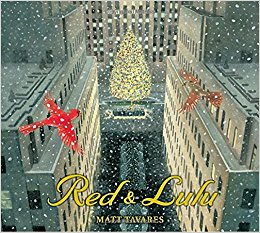by Sam Juliano
Most book historians see it as America’s answer to Britain’s beloved The Wind in the Willows. Teachers have been partial to it almost from the time it was named a Newbery Honor book in 1953, months after it released. Indeed the very fact it did not win the Newbery Medal remains in the children’s book world a bone of contention to match the Oscar snub of Orson Welles’ Citizen Kane in 1941, especially since the vast majority can’t identity the title chosen over it. Similar to the way some recall where they were when they heard the news of Kennedy’s assassination, former students have never forgotten when they first read the book. Some like myself can vividly recall the year and place where it happened and teacher who presented it (Grade 4, Mrs. Celeste Zematies, 1963/4), while many others seem to always recall the experience as something very special in their lives. Though the author of this tour de force of children’s literature only published three novels during a long life, the fascination for his persona has never abated. Children who read Charlotte’s Web are invariably drawn to questions about its creator. The intrigue is bolstered by an emotional connection to the book’s characters. As a child I had hoped the author would still be alive to tell us that Charlotte had not really expired or that she would be resurrected in a sequel. White lived twenty-one years more after the book was read to our class, and was highlighted in several articles of The Weekly Reader, so some of us never stopped hoping. What I found out in adulthood is that White was an even more intriguing literary figure, and that after he passed away at the ripe old age of 86 on October 1,1985, information about his life were invaluable in piecing together how this towering literary figure came into the ideas that resulted in his three iconic works, one of which is his wildly popular maiden novel, Stuart Little.
Just barely one year ago two-time Caldecott Honor winning author-illustrator Melissa Sweet released her own homage to the E.B. White literature with a passionate straightforward biography, Some Writer!, utilizing archival materials that helped paint a provocative portrait of the icon through letters, manuscripts, interview excerpts and photos that achieve immediate visual chemistry with Sweet’s trademark mixed media collage art. It was an exceptional work, befitting such a beloved American icon, but as it turns out it is not the final word. Indeed it is doubtful there will ever be any measure of finality as far as White is concerned. What even the most passionate White aficionados could hardly have expected was another book so soon and at that one worthy of comparison with its immediate predecessor conceptually and artistically, a collaboration of extraordinary prose and sublime art, pairing together a newcomer with a young artist who already has won a Caldecott Honor among a bevy of magnificent titles. (more…)































 Click on names for archives
Writers/Founders
Click on names for archives
Writers/Founders